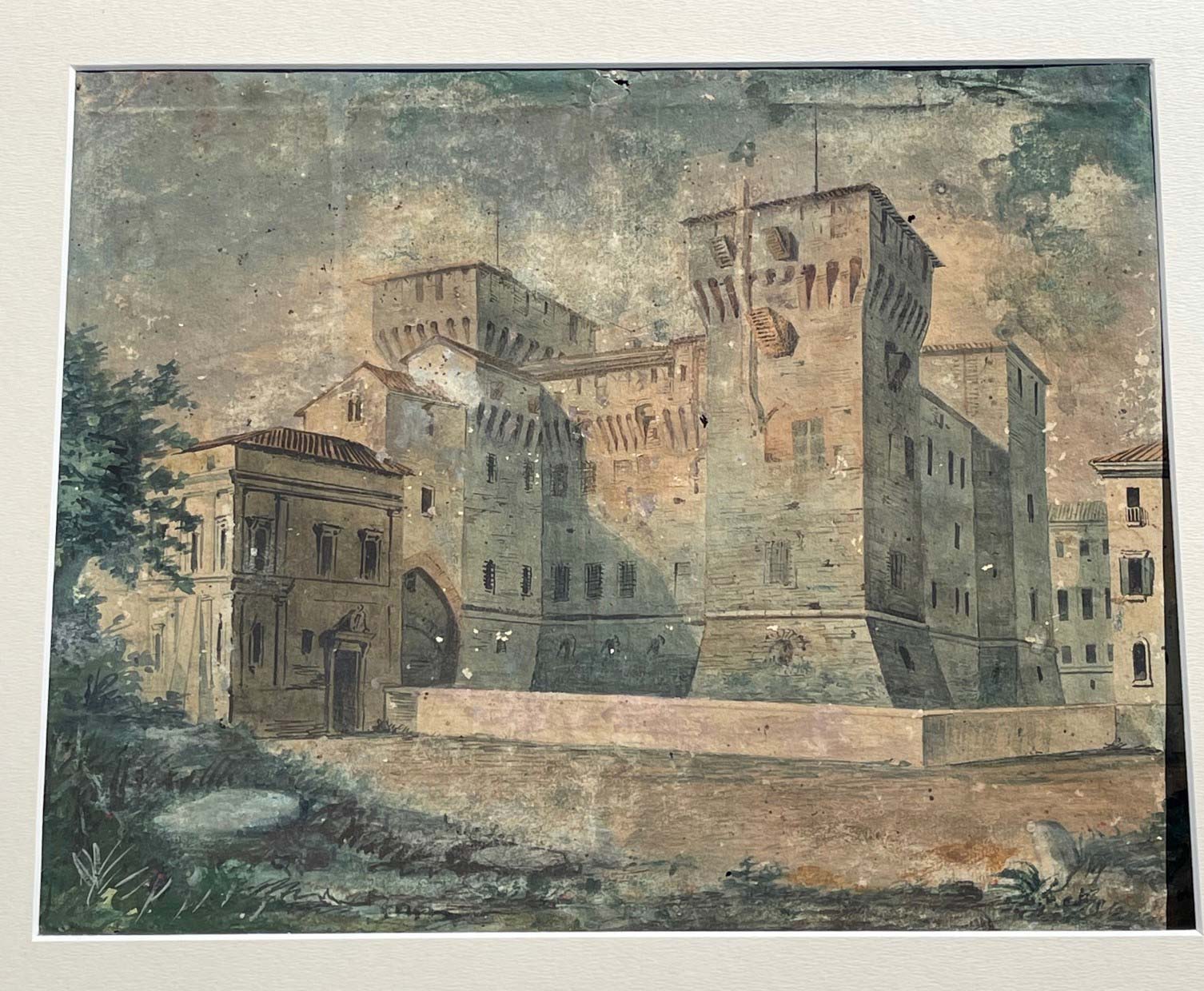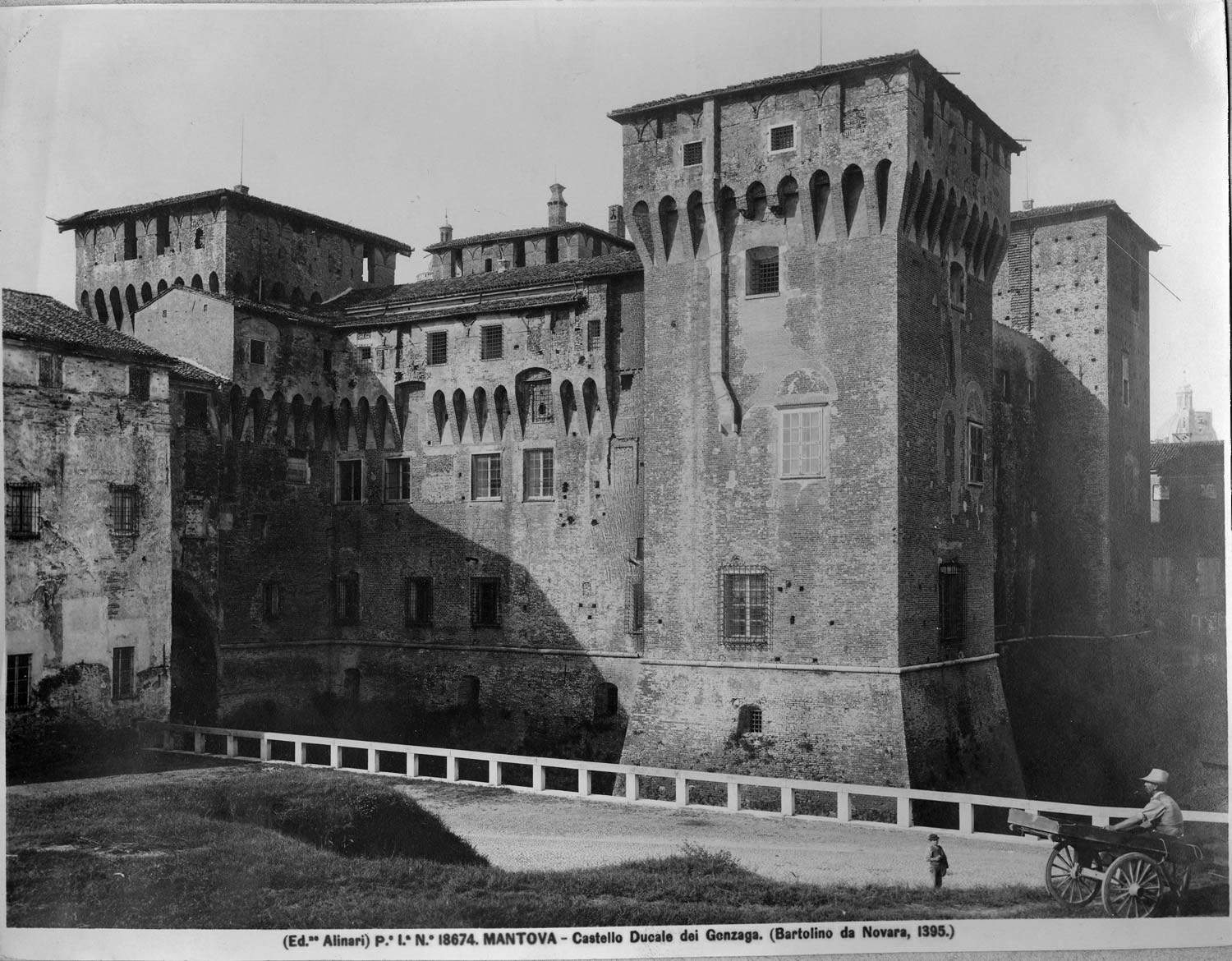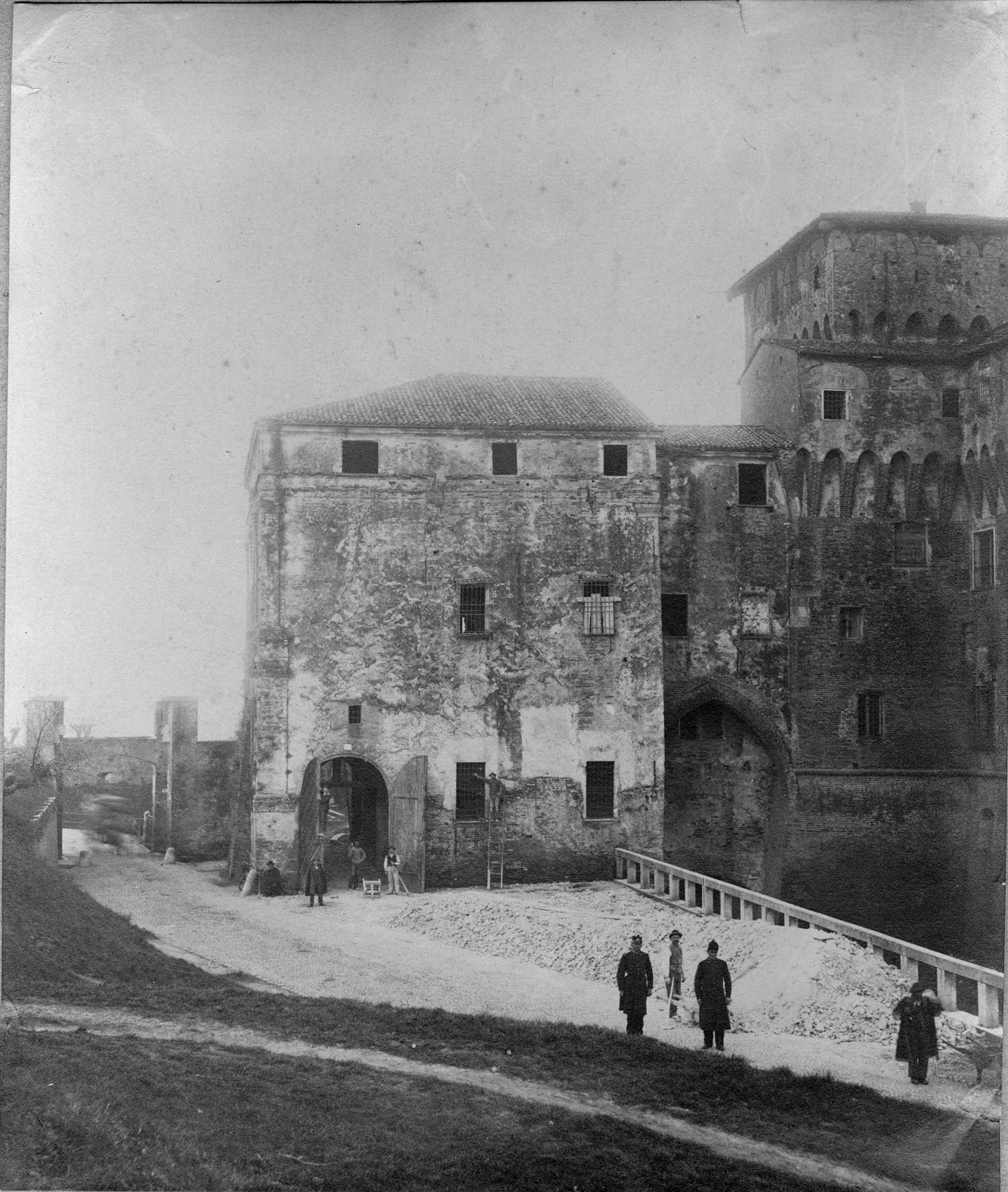The Ducal Palace in Mantua has acquired a drawing by painter Giovanni Piancastelli (Castel Bolognese, 1845 - Bologna, 1926), executed in gouache on paper, measuring 284 by 359 millimeters, depicting the Castle of San Giorgio and the adjoining Palazzina della Paleologa. Probably made in the 1860s, “from life,” as reported by its author on the back of the sheet, the drawing allows us to discover some architectural features of the little palace erected to a design by Giulio Romano in the 1830s and demolished in 1899, which the many photographs of the time (some of which are preserved in the archives of the Ducal Palace) do not report. On the visible sides of the building, in fact, there are some windows and a portal surmounted by a coat of arms attributable to a probable seventeenth-century phase of the building, already lost at the time of demolition. More canonical is the representation of the Castle, on whose side towards San Giorgio, as also visible in many photographic shots, a long flue ran at the time: at the base of the latter, in correspondence with the Bridal Chamber, the ogival profile of one of the Gothic windows plugged at the time of Marquis Ludovico II can be discerned, when Andrea Mantegna ’s pictorial enterprise imposed a readjustment of the environment also on the architectural level.
Giovanni Piancastelli, a third-born son of humble origins (his father Pasquale Piancastelli was a “canapino,” or hemp worker( devoted himself to art, travel and collecting. He remained celibate throughout his life. Educated by the Capuchin Friars Minor in his hometown, he earned a drawing diploma in 1862 in nearby Faenza and, to consolidate his brilliant artistic skills, enrolled in 1864 in the Academy of St. Luke. In 1866 he left for military service: this was the occasion for a series of trips before his return to Rome, where in 1871 Prince Marcantonio Borghese hired him as an art consultant and drawing teacher for his children. During this period Piancastelli consolidated his art-historical culture, became an expert in prints and drawings, and came into possession of many works of art. This made him an important collector of the time. During his lifetime he made many portraits (about three hundred) of the illustrious figures of the Roman aristocracy and became the first director of the Borghese Gallery when it came under state ownership on January 6, 1902.
“There are not so many nineteenth-century views of the Castle of St. George, despite the fact that this is one of the most appreciated and represented city elevations,” says Ducal Palace director Stefano L’Occaso. “The drawing - which was pointed out to me by Andrea Torelli, whom I thank - also features the warping of the Palazzina della Paleologa façade, or at least a suggestion of the warping itself, but also traces of plastering and polychromy that black-and-white photos do not restore. Due to its delicate and fragile technique, the work cannot be constantly exhibited, but we will soon find a way to present it to the public. Palazzo Ducale continues to increase its collections, focusing on works that help tell the story of the city and the territory.”

 The Castle of San Giorgio at the
The Castle of San Giorgio at the The Castle of San Giorgio at the end of the nineteenth
The Castle of San Giorgio at the end of the nineteenth The Castle of San Giorgio at the
The Castle of San Giorgio at the
 |
| Mantua, Ducal Palace acquires important 19th-century drawing of San Giorgio Castle |
Warning: the translation into English of the original Italian article was created using automatic tools. We undertake to review all articles, but we do not guarantee the total absence of inaccuracies in the translation due to the program. You can find the original by clicking on the ITA button. If you find any mistake,please contact us.